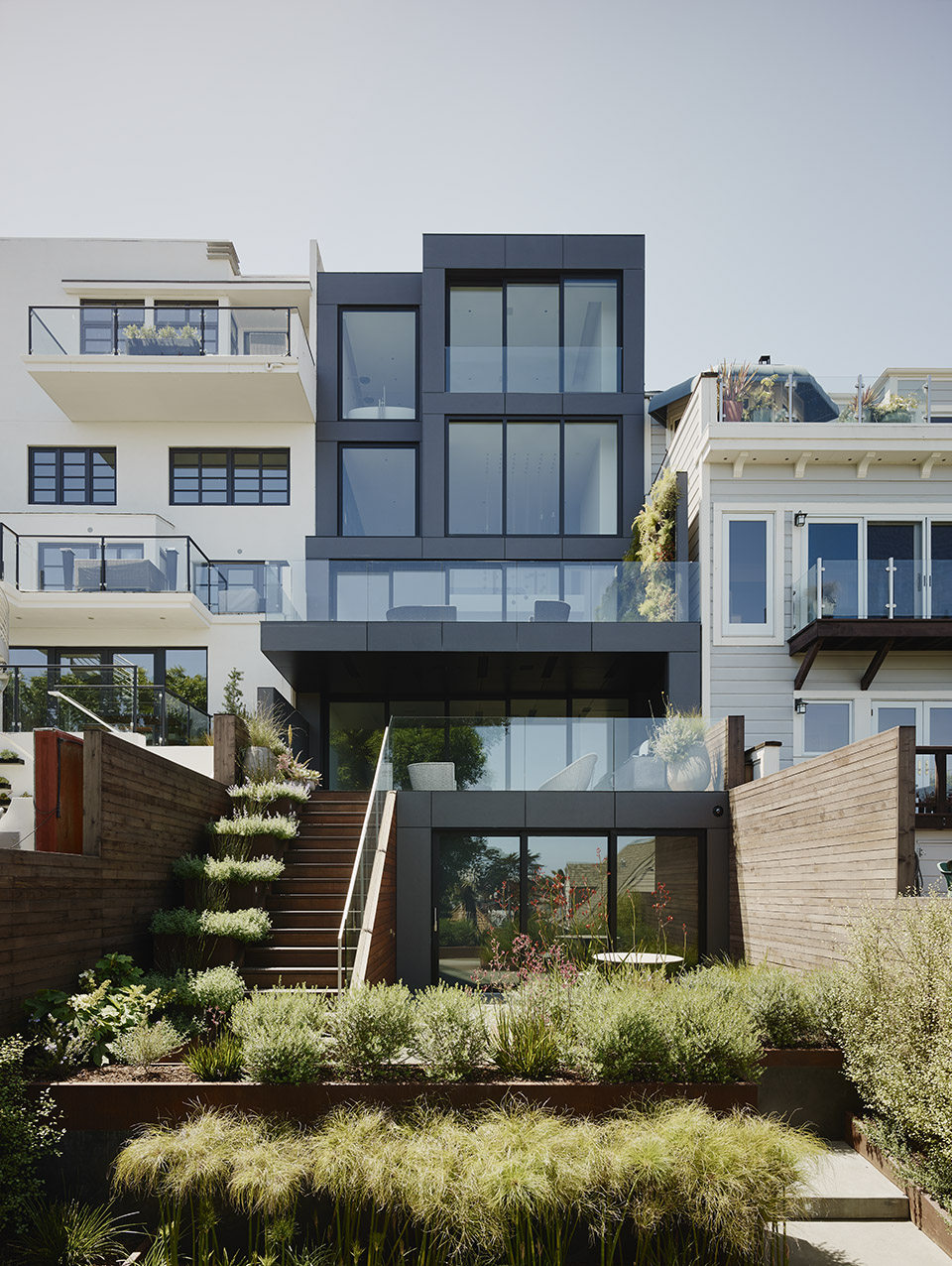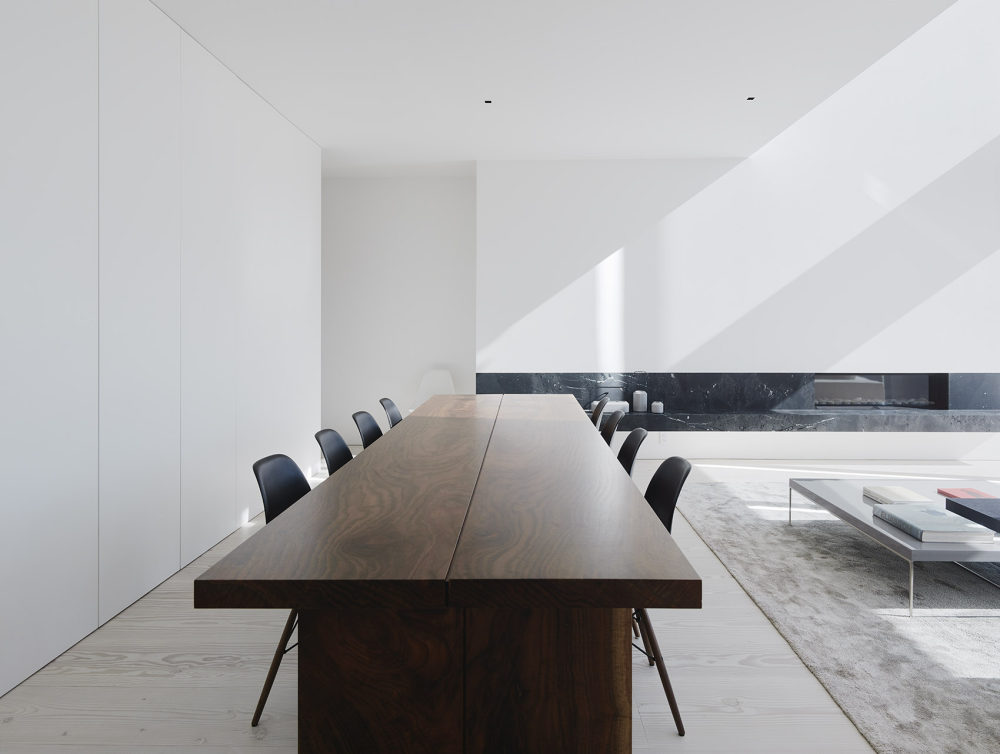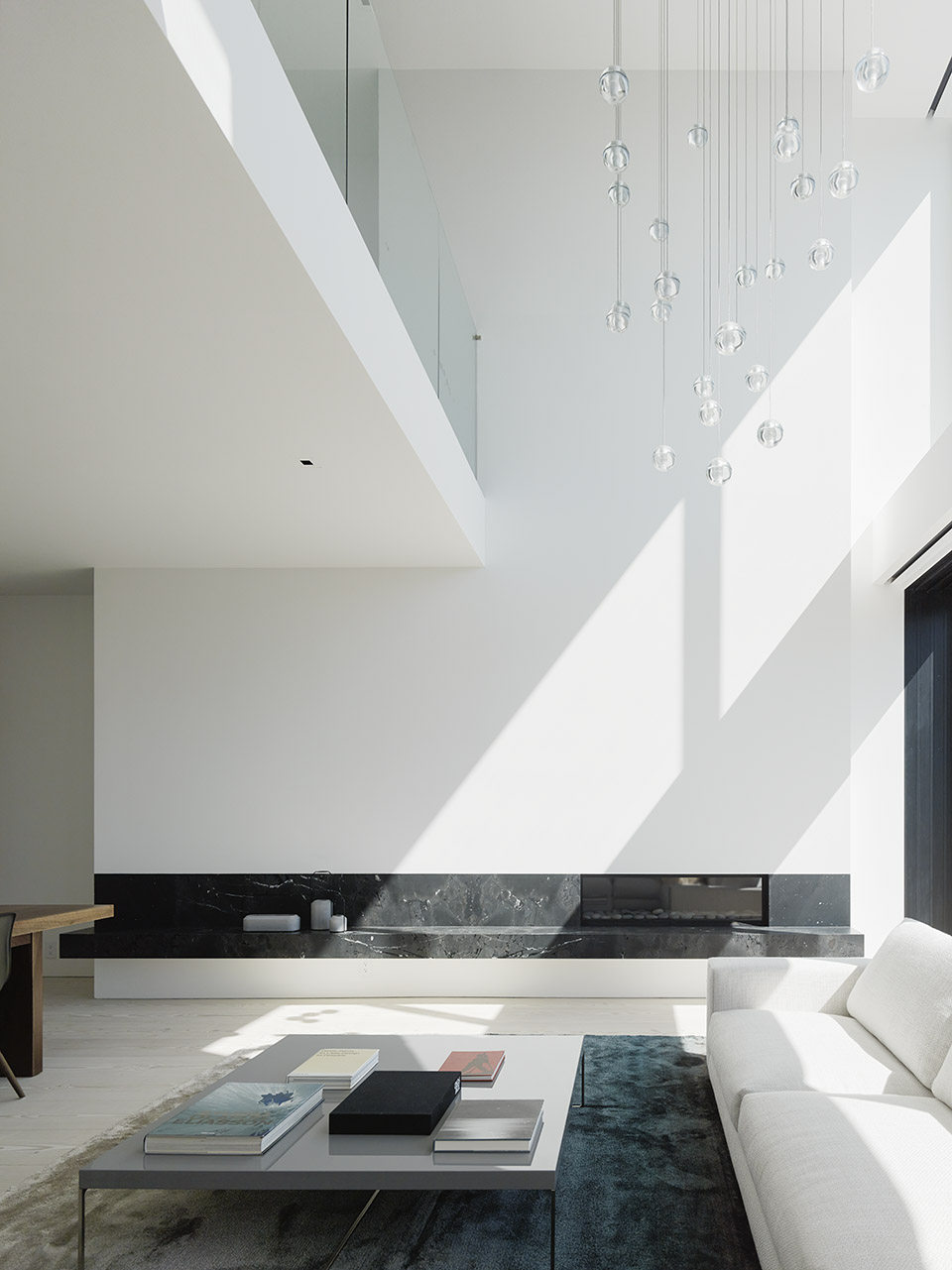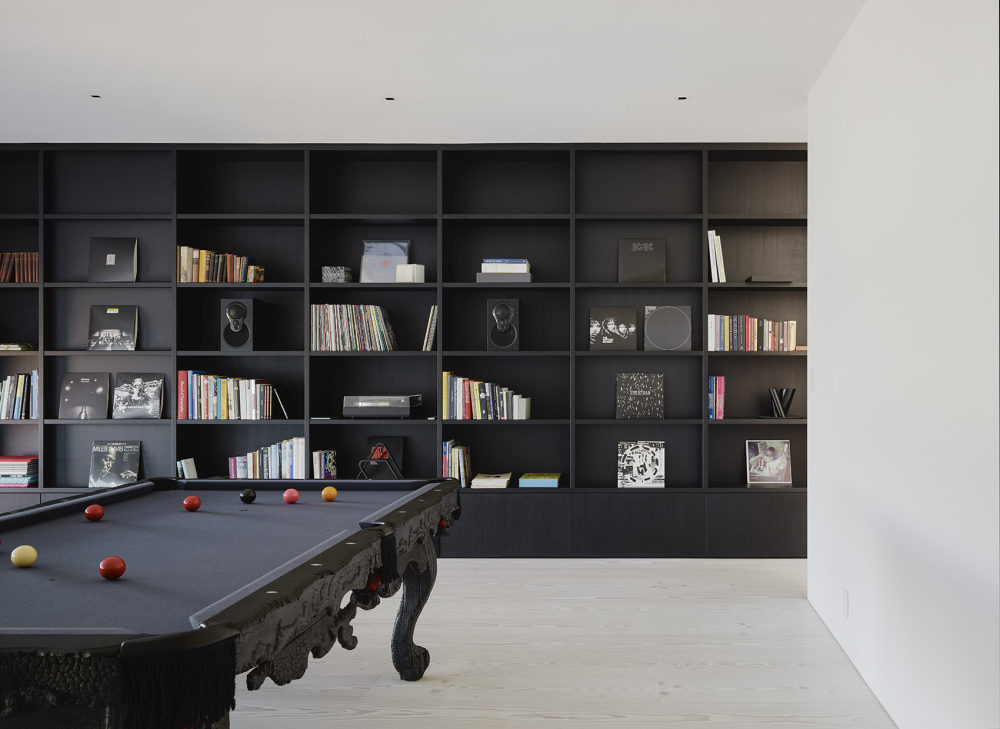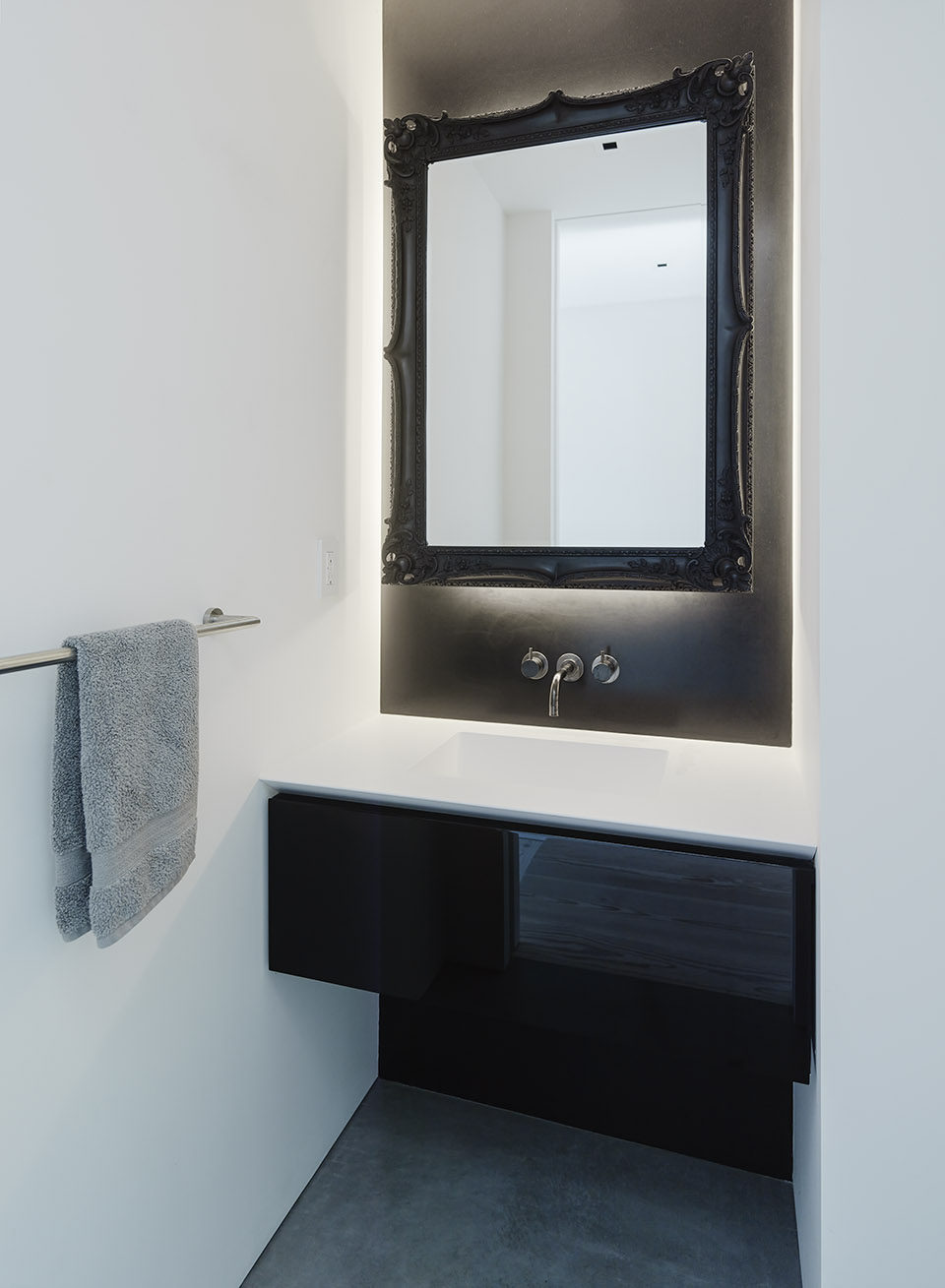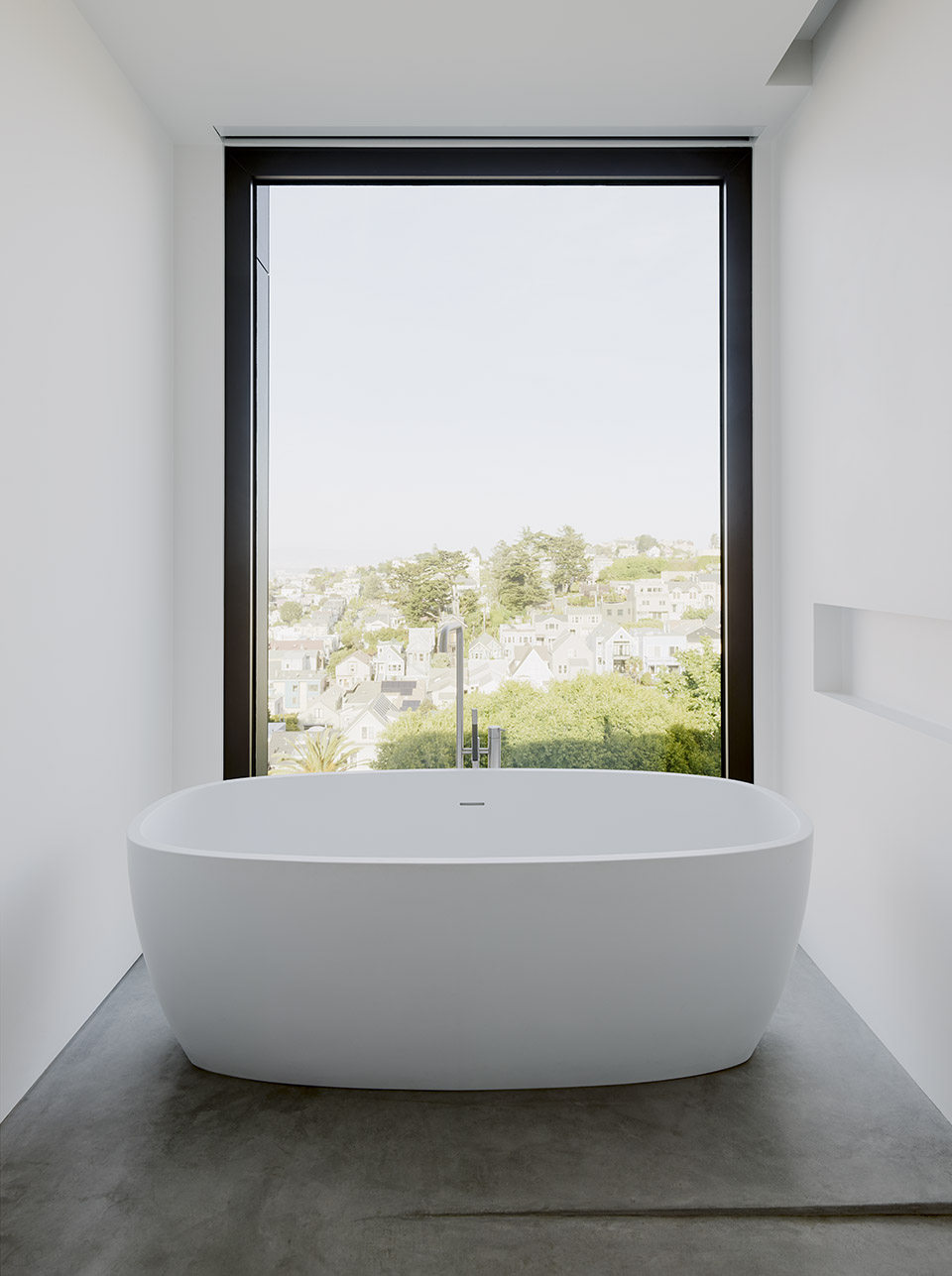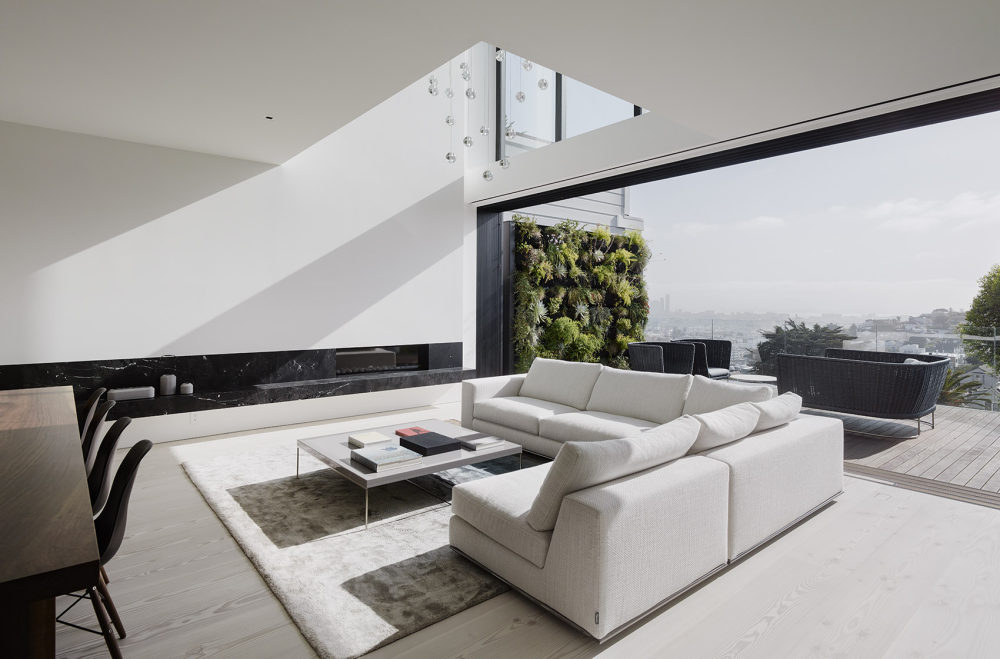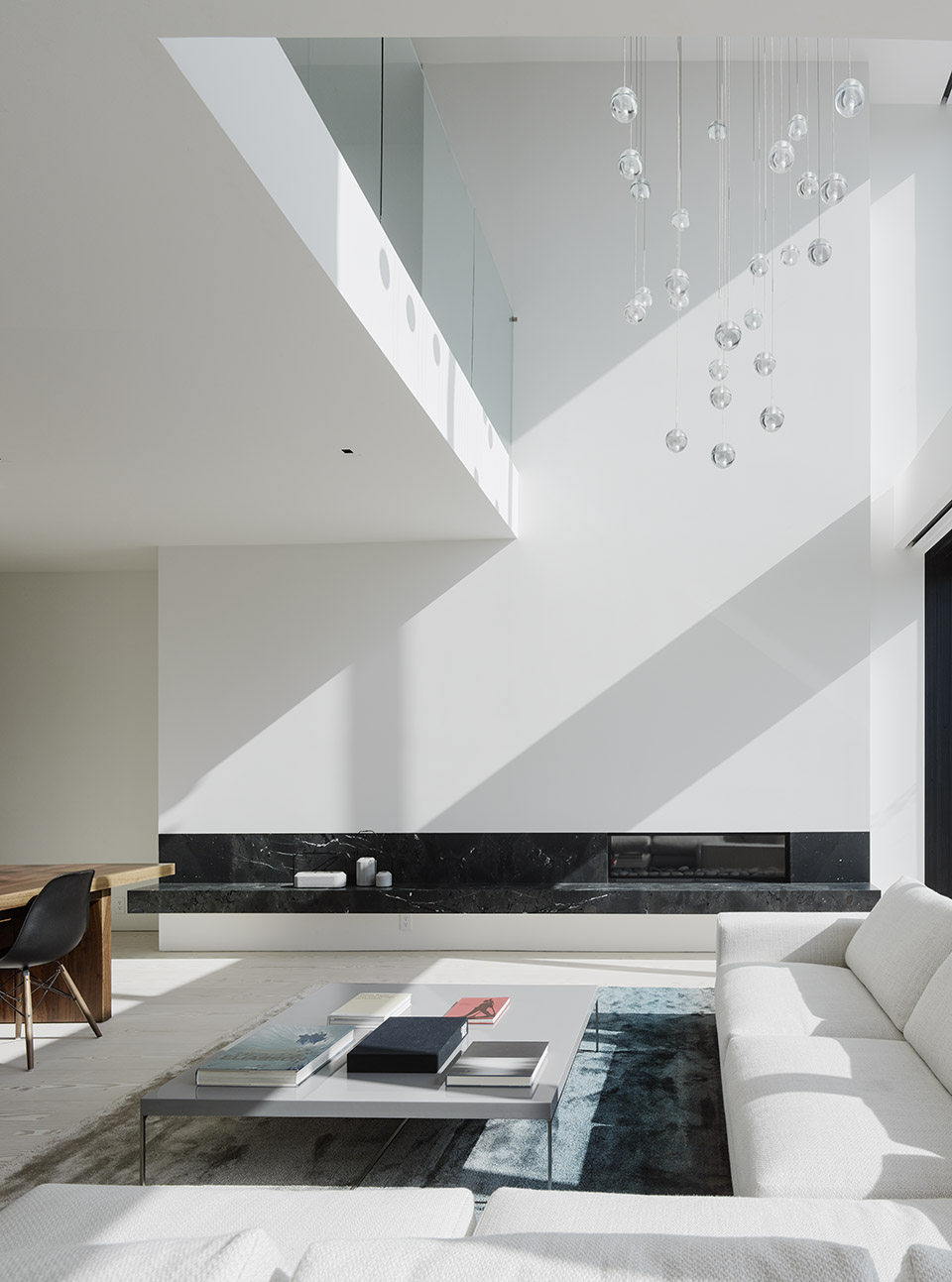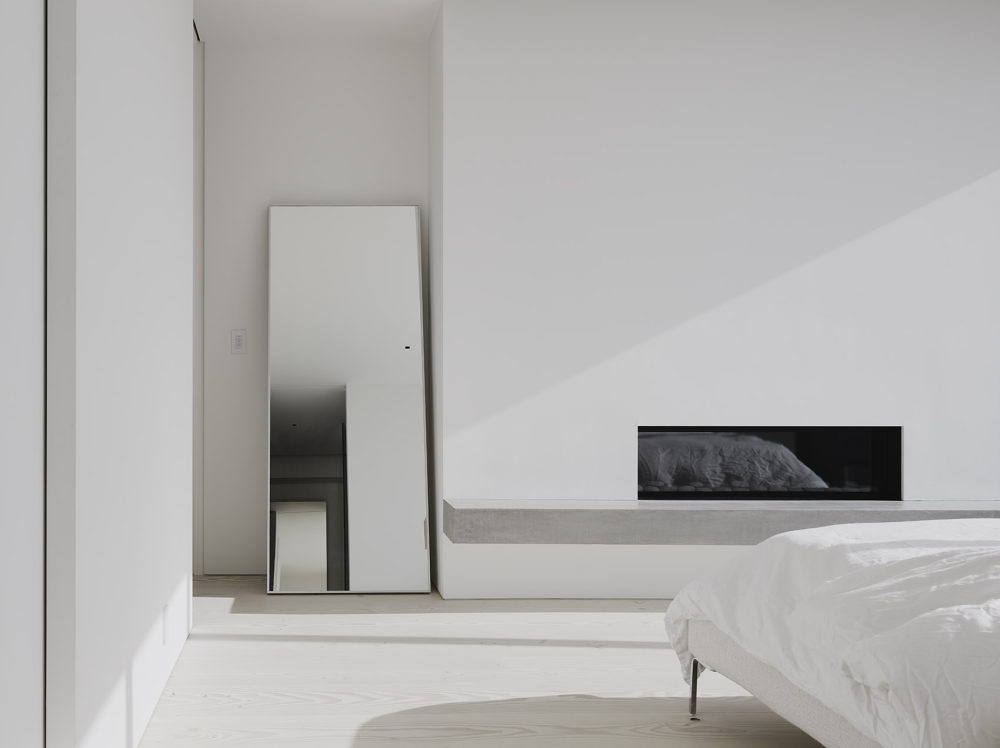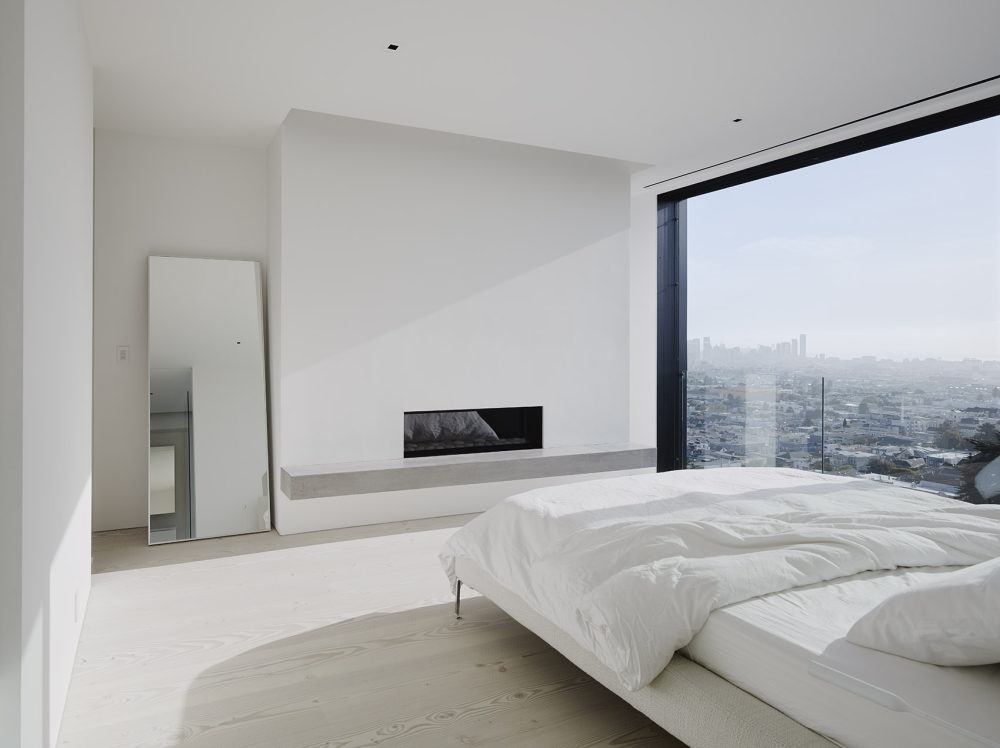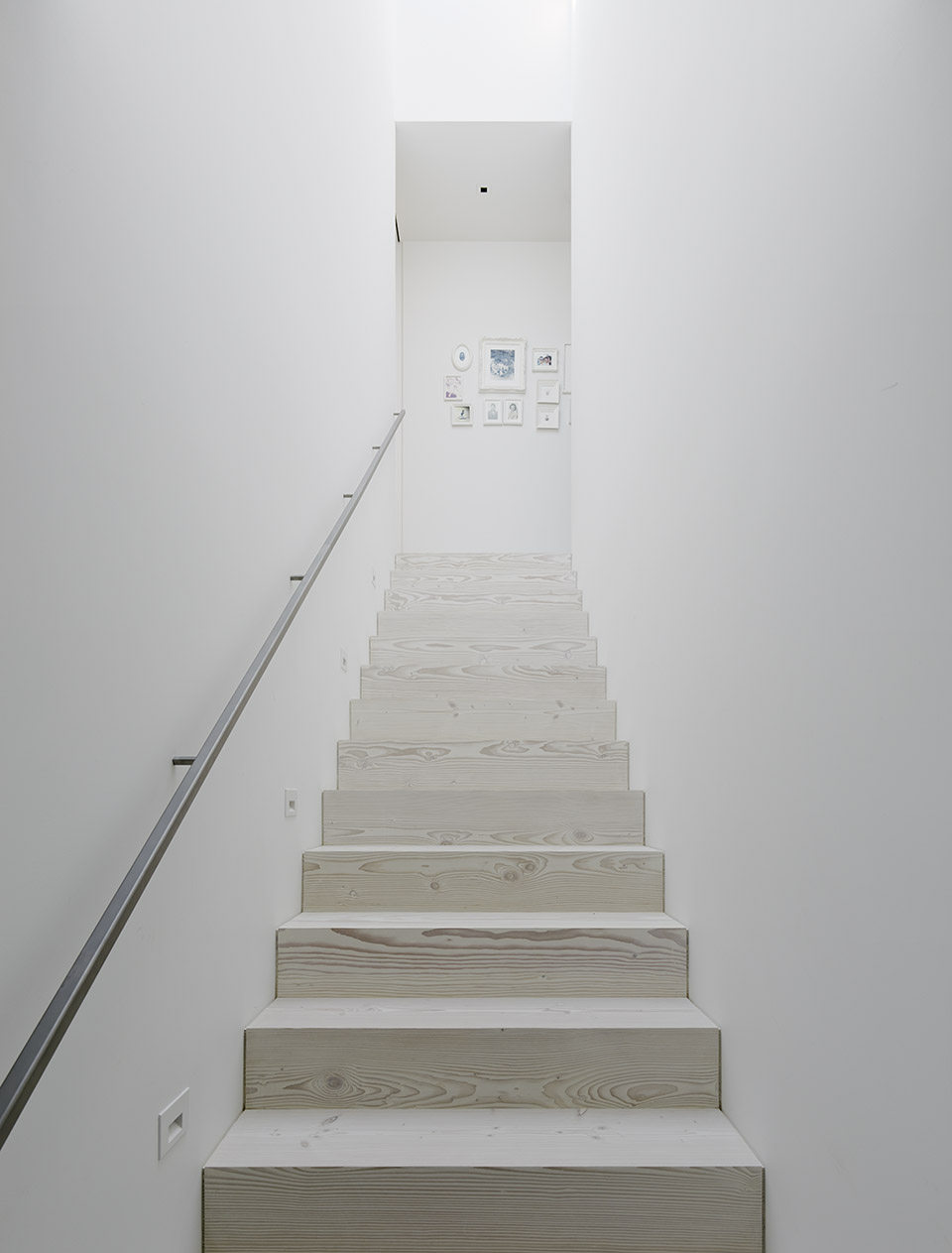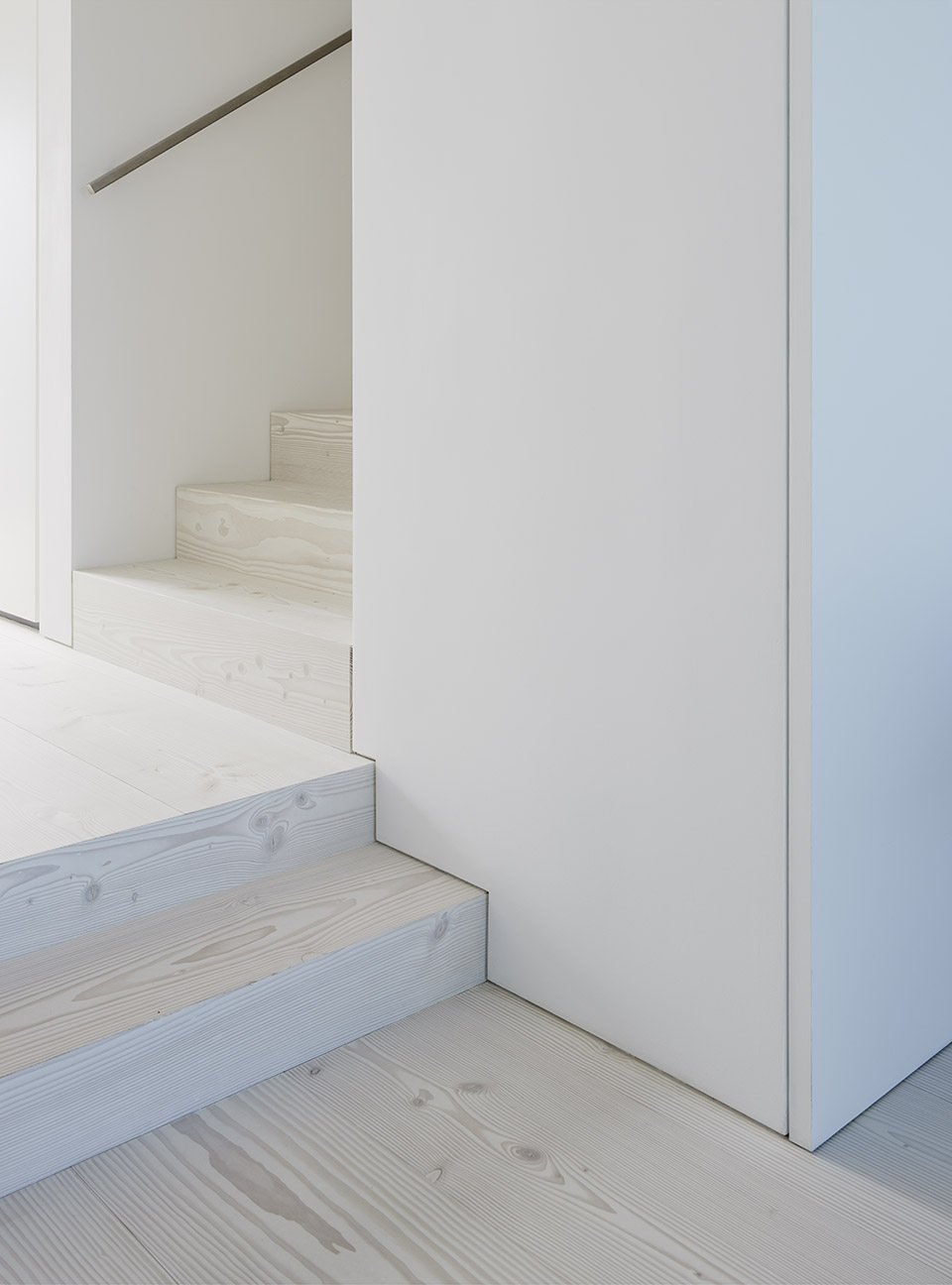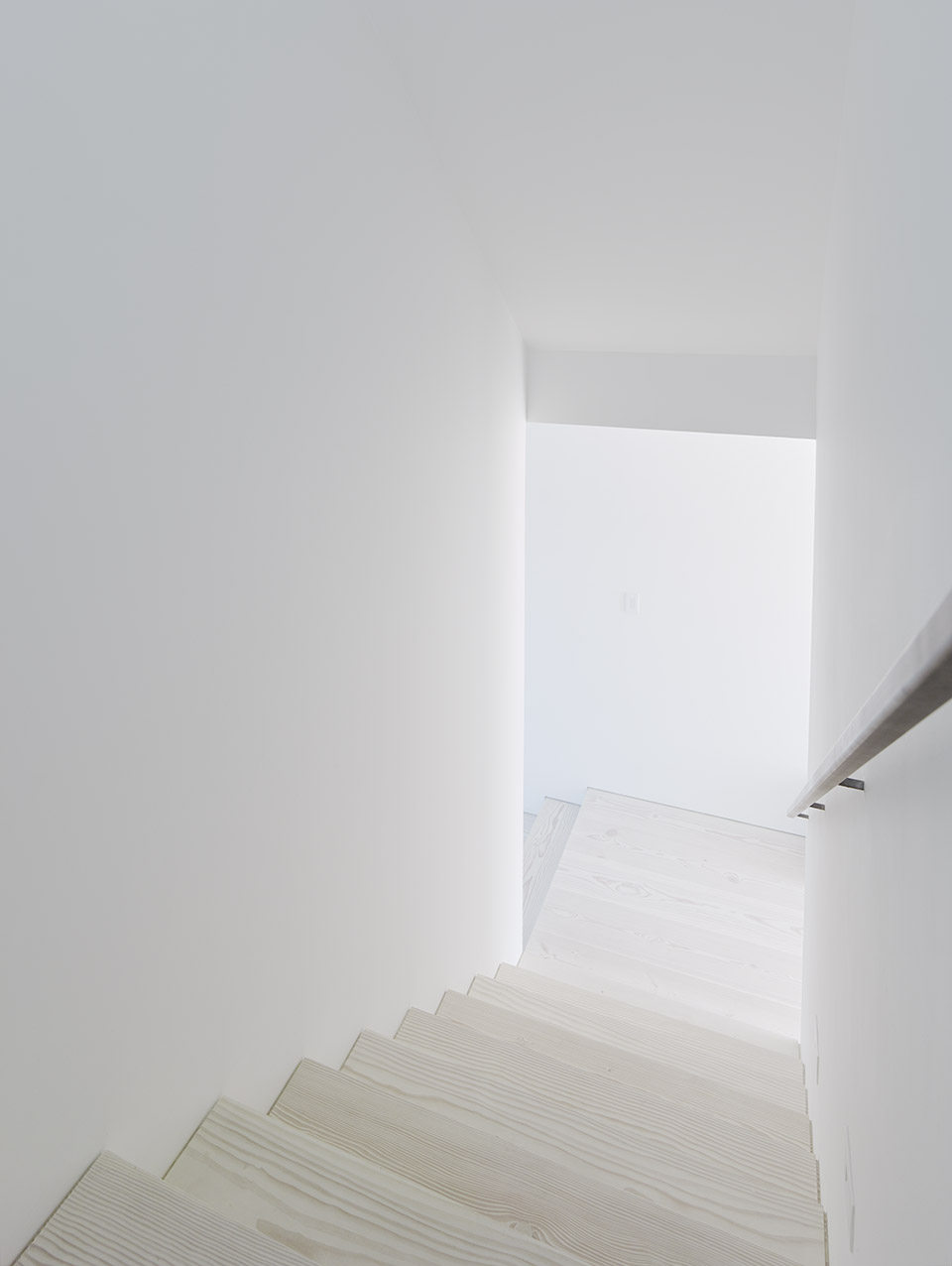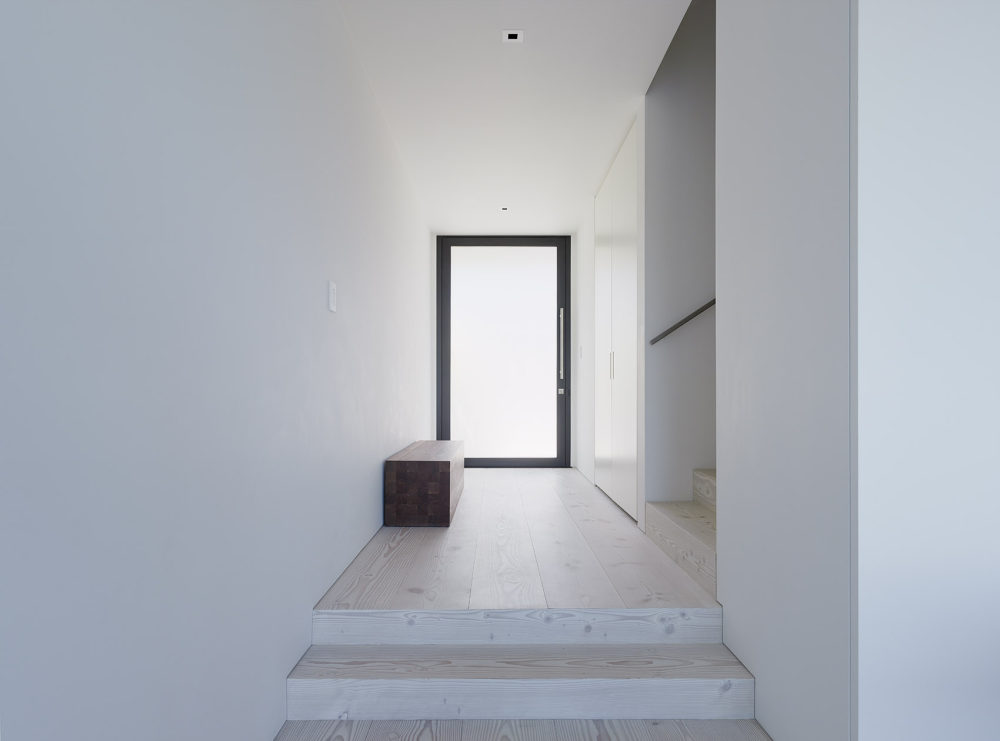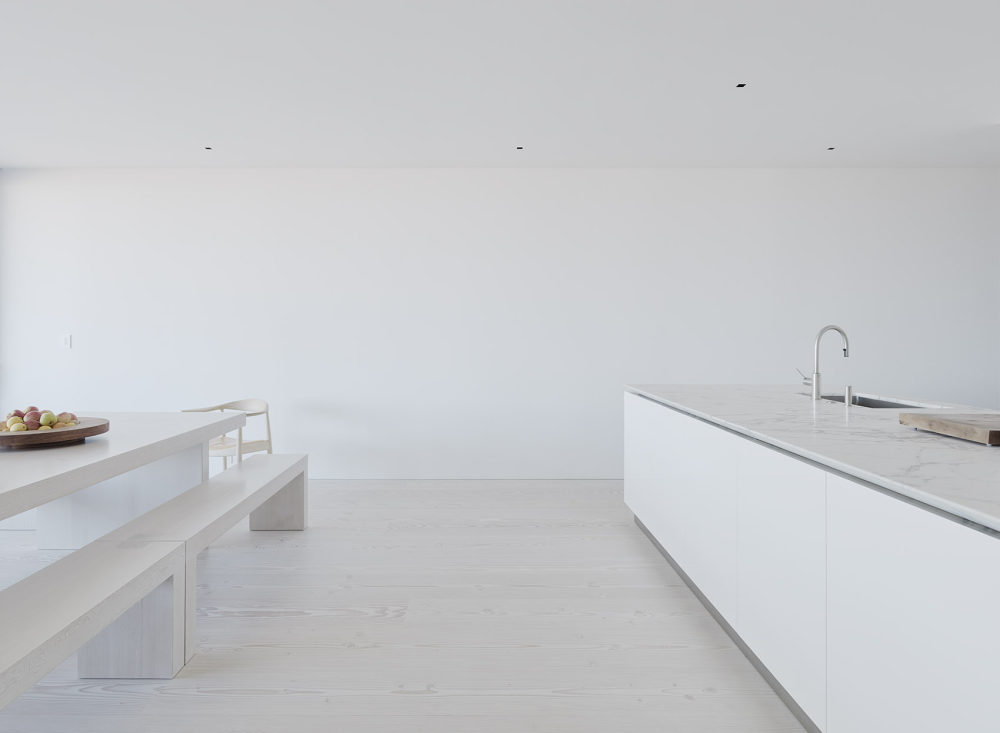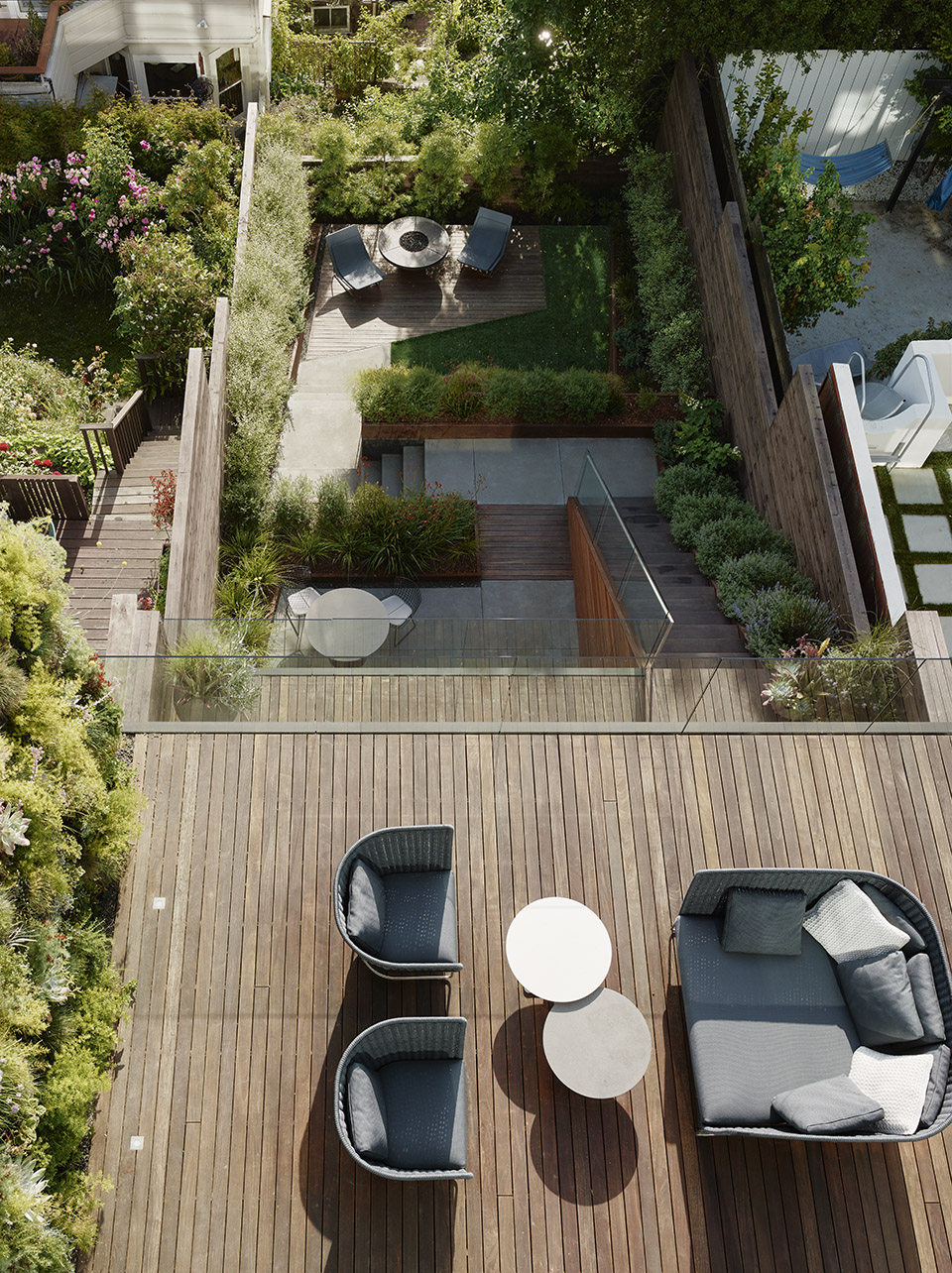对于室内空间,建筑师首先从物质材料入手,在设计最初便选择了作为整栋住宅基调的Dinesen白色花旗松木地板,并在建筑既有的几何形态中构建出一个纯白的空间。这种“白上加白”的选择基于房主在审美上对纯净、留白以及极简主义的一贯关注,以及他们对于室内设计的极大热情,这些都与Edmonds + Lee事务所不谋而合:例如画廊或艺术馆的视觉趣味往往产生于布置、艺术品以及家具。“我们是在为房主设计一块画布,使他们能够去展示自己的作品”,建筑师Robert Edmonds如是说。这是一块天衣无缝的画布,完全的空间流动,以及连贯一致的材料,这种行云流水般的空间变化,与现代主义建筑中常见的中断感完全不同。
On the interior, the architects started with the materiality first, working within the inherited geometry of the project, and from an all-white palette that began with the very first design choice, white Douglas fir floors from Dinesen, something the architects knew they were going to build the house around. They started with white-on-white because of the clients’ general aesthetic focus—on white, spare, minimalism—and their enthusiasm for treating interiors the same way Edmonds + Lee do: like galleries or museums where the main visual interest pops from the decor, the art, and the furniture. “We were designing a neutral canvas onto which they project their own artifacts,” says architect Robert Edmonds. That neutral canvas became seamless, with spaces that flow from end to end, and with a continuity of materials that favor fluid transitions over the sharp disconnects so often found in modernist projects.

